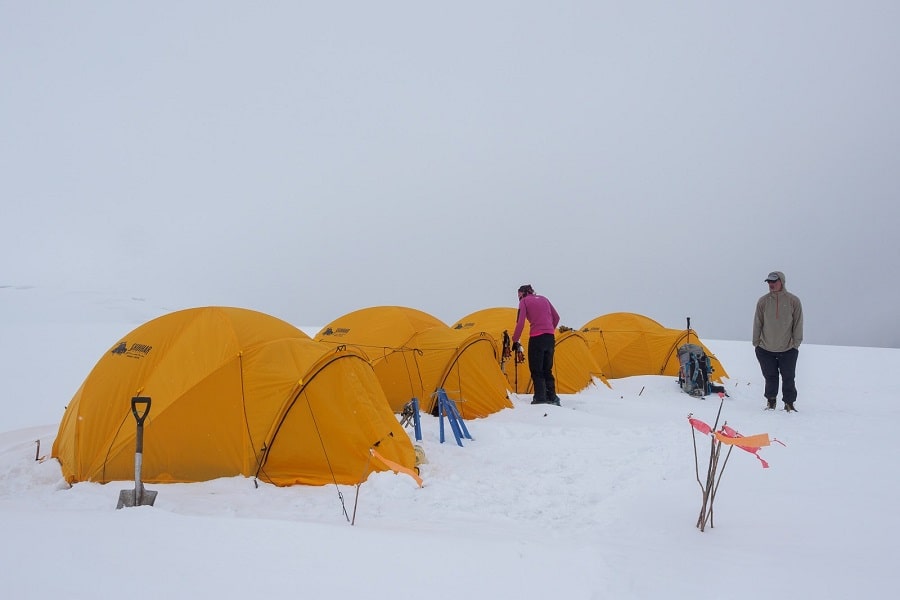About Tent: Things on Should Know
When you are trekking in the high altitudes, you can reasonably expect to find no permanent man-made structures for shelter. To spend the nights in the frigid and windy conditions, the most commonly used means of shelter are tents. Spending the nights in the open is unreasonable while the availability of natural shelters like caves is uncertain and less preferable.

Tents come in many varieties for recreational, military and expedition purposes. The tents for outdoor purposes are generally divided into two-season, three-season, four-season and expedition tents. The two-season tents are generally used in areas with pleasant environment and can sustain light showers. On the other extreme the expedition tents are designed to withstand heavy rain, snow and strong winds.
The main factors involved in choosing the tent are the number of people who can fit in the tent, weight of the tent and the type of environment conditions you expect to encounter.
The modern expedition tents have the following main parts.
(i) Flysheet: This is the outer covering of the tent. It is water-proof and helps to keep the inner tent dry. It always provides a surface for condensation. There are extra poles to prevent the flysheet from coming into contact with the inner tent skin.
(ii) Inner tent: This is the actual skin of the tent. The fabric may be made of cotton, polyester or nylon. It may or may not be water-proof.
(iii) Vestibule: Additional space is provided inside the tent for storage of boots and other equipment. They may also be used for other purposes such as cooking, depending on the space available.
(iv) Groundsheet: This is used to prevent contact of the tent from the ground. It is water-proof and it may or may not be integrated with the inner tent.
(v) Poles: The poles offer structural support to the tent. Rigid poles are used in bigger tents requiring more stability while semi-rigid poles are also available.
(vi) Stakes: The stakes are used to fasten the tent to the ground. Some are tied to guy ropes to provide additional stability and shape to the tent.
(vii) Air Vents: The air vents are present to provide space for circulation of air. The air vents are generally smaller in expedition tents to prevent snow from piling in. Lack of proper ventilation leads to uncomfortable atmosphere inside the tent, in hot weather conditions, and condensation problems.
The tents are generally to be pitched on a flat, firm surface. Soft snow and rocky surfaces are unsuitable for pitching of tents. The tent door and vents should be aligned along the wind direction to provide for suitable air circulation, and fight against condensation. If you are not pitching your tent at an elevated surface, then it is advisable to dig drainage moats around the tent with an outlet to deal with rain water. Heavy stones can be used to support the stakes, so that it is able to bear the strain in windy conditions.
While choosing the tent itself, one consideration is the size and weight of the tent. Larger the size, heavier is the tent, and it can also hold more number of people. Larger tents are also more stable but the weight is an important factor and carrying such a heavy weight through the length of the trek is not always feasible.
One interesting option that is popular among climbers and mountaineers is bivouac shelter. It consists of sleeping in the open in bivouac sack or making a shelter consisting of natural materials. A bivouac sack is an extremely small, lightweight, waterproof shelter, and an alternative to traditional tent systems.